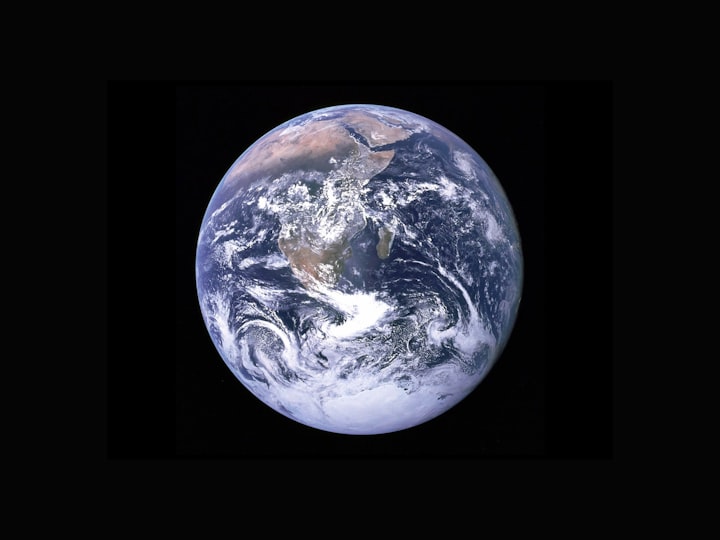The Flat Earth Theory: Debunking the Myths and Uncovering the Truth
We live on a ball
As a science enthusiast, the flat earth theory has always intrigued me. How could anyone believe that the earth is flat when there is overwhelming evidence to the contrary? In this blog post, I will explore the history of the flat earth theory, the scientific evidence against it, and debunk common myths surrounding the theory. I will also delve into the psychology behind flat earth believers and the danger of promoting such ideas. Finally, I will discuss the importance of critical thinking and scientific literacy and the role of social media in spreading misinformation. Let's get started.
Introduction to the Flat Earth Theory
The flat earth theory is the belief that the earth is not a sphere, but rather a flat disk. Flat earthers argue that the evidence for a spherical earth is either fraudulent or misinterpreted. They claim that the horizon always appears flat, that there is no observable curvature, and that the earth's gravity is not strong enough to hold onto its atmosphere. Flat earthers also believe that NASA and other space agencies are part of a vast conspiracy to hide the true shape of the earth.
Historical Background of the Flat Earth Theory
Belief in a flat earth can be traced back to ancient civilizations such as the Babylonians and Egyptians. However, by the time of the ancient Greeks, the idea of a spherical earth had gained prominence. The Greek philosopher Pythagoras was one of the first to suggest that the earth was a sphere, and this idea was later supported by Aristotle and other ancient scholars.
Despite this, the flat earth theory persisted. In the Middle Ages, the Catholic Church promoted the idea that the earth was flat, and anyone who suggested otherwise was labeled a heretic. This belief continued until the 15th century when explorers such as Christopher Columbus proved that the earth was indeed spherical.
Scientific Evidence Against the Flat Earth Theory
Today, there is overwhelming scientific evidence that the earth is a sphere. One of the most compelling pieces of evidence is the observation of the earth's shadow during a lunar eclipse. The shape of the shadow is always curved, which can only occur if the earth is a sphere. Additionally, the fact that the horizon appears flat is an illusion caused by the limited range of human vision.
Other evidence includes satellite imagery, which clearly shows the curvature of the earth, as well as the fact that objects disappear below the horizon as they move further away. The earth's gravity also provides evidence for its spherical shape, as a flat earth would not be able to produce the same gravitational effects.
Debunking Common Myths of the Flat Earth Theory
One common myth surrounding the flat earth theory is that airplanes would have to constantly adjust their altitude to avoid crashing into the earth's surface. However, this is not the case as pilots use the earth's curvature to maintain a constant altitude.
Another myth is that the earth's gravity is not strong enough to hold onto its atmosphere. However, this is contradicted by the fact that the earth has an atmosphere, while other celestial bodies such as the moon do not.
Understanding the Psychology Behind Flat Earth Believers
The psychology behind flat earth believers is complex. Many flat earthers have a distrust of authority and are skeptical of mainstream science. They often rely on anecdotal evidence and personal experience rather than empirical evidence. Additionally, some flat earthers are drawn to the theory because it provides a sense of community and belonging.
The Danger of Promoting the Flat Earth Theory
Promoting the flat earth theory can be dangerous as it undermines scientific literacy and critical thinking. It can also lead to the spread of other conspiracy theories and misinformation. The belief in a flat earth can also have real-world consequences, such as the rejection of climate change or the refusal to vaccinate children.
The Importance of Critical Thinking and Scientific Literacy
In today's world, it is more important than ever to be scientifically literate and to engage in critical thinking. The ability to evaluate evidence and distinguish between fact and fiction is essential for making informed decisions. We must also be aware of the role that social media plays in spreading misinformation and be vigilant in our consumption of information.
The Role of Social Media in Spreading Misinformation
Social media has made it easier than ever to spread misinformation. Conspiracy theories and fake news can quickly go viral, spreading rapidly across the internet. It is important to be aware of the sources of information and to fact-check before sharing or believing anything we read online.
Debating the Flat Earth Theory: Right or Wrong?
Debating the flat earth theory is not a matter of opinion, but a matter of fact. The scientific evidence overwhelmingly supports the idea that the earth is a sphere. Debating the flat earth theory only gives it a platform and legitimizes a dangerous and false belief.
Conclusion: The Truth About the Shape of the Earth
In conclusion, the flat earth theory is a dangerous and false belief that undermines scientific literacy and critical thinking. The overwhelming evidence supports the idea that the earth is a sphere, and promoting the flat earth theory only serves to spread misinformation. It is essential that we engage in critical thinking, evaluate evidence, and be vigilant in our consumption of information. Let's leave the flat earth theory where it belongs - in the past.
Rate this article






Comments
There are no comments for this story
Be the first to respond and start the conversation.